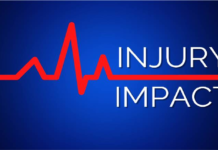It’s a big hurdle
The down payment. It’s the only thing keeping you from a home of your own. You’ve got a good job, you’re paying down debt, and mortgage rates are still remarkably low. And rental rates are getting ridiculous.
Let’s see if we can break down this home buying barrier.
It doesn’t always take 20% down
If you’re a first-time home buyer, the down payment hurdle you have to clear may be quite a bit lower than you think. Traditionally, lenders have preferred 20% down, but a lot of low down payment options are available, especially to first-time buyers.
Mortgages guaranteed by the Federal Housing Administration, Department of Veterans Affairs or Agriculture Department can be go-to low down payment loans. In fact, mortgages backed by the VA and the USDA — for those who qualify — usually don’t require a down payment at all. A funding fee is charged on VA loans, but even that can be rolled into your monthly loan payment.
You could get an FHA-backed loan with as little as 3.5% down, but you’d have to pay mortgage insurance to help lenders defray the costs of loans that default.
Conventional loans, which aren’t backed by the government, also offer low down payment programs to first-time buyers. Down payments of just 3% are common. Some lenders will offer 0% down loans. Mortgage insurance will enter the picture here, too.
However, a lower down payment usually means you’ll pay a higher interest rate.
Crowdfunding a down payment
Crowdfunding is the ultimate dream for snagging sudden money from strangers, other than the lottery. It can be done, but there are some catches.
First, you’re not going to get this done on Kickstarter; personal fundraising isn’t allowed there. Sites like GoFundMe are best suited for hard-luck appeals like medical expenses for life-threatening diseases, so it’s unlikely you’ll get a lot of help there when you’re pitching to raise money for a mortgage down payment. But who knows?
FeatherTheNest.com might be an option to consider. It lets you build an online profile for a gift registry where contributions to your down payment can be funneled into a linked bank account. The service seems particularly suited for engaged couples and newlyweds. The transaction fees are pretty stout, though — totaling about 8% on each donation.
Family down payment gifts and loans
Getting help from family members might be another way to go.
Garrett Clayton, CEO of AmCap Mortgage in Houston, cautions that receiving a gift toward a down payment takes a “full circle” of documentation to satisfy a mortgage lender’s requirements. The donors will have to verify in writing not only that they made the gift but that they have the financial ability to make such a donation. That will require them to provide bank statements as proof, along with a letter confirming that the donation is a gift and not a loan.
“From a lender perspective, if it is something that will be required to be paid back, then we would need to take those terms of repayment into the calculation of the borrower’s [debt-to-income] ratio, to make sure they still qualify,” Clayton says.
However, while properly documented gifts are acceptable to lenders, you might not want to rely exclusively on the kindness of family members, he adds.
“We see that borrowers that have none of their own money in the transaction are way more likely to default on loans,” Clayton says. “I would much rather do a loan to a 600 FICO client that has 100% of their own down payment, versus a 780 client that is getting 100% [of their down payment as a] gift.”
State and local down payment assistance
Here’s a little-known source of down payment help: state and local assistance programs. Rob Chrane, CEO of Atlanta-based DownPaymentResource.com, says the service has identified close to 2,500 initiatives across the nation.
There are programs in every state, implemented by government agencies, nonprofits, foundations and even employers. Assistance can have a geographic focus as wide as the nation or as narrow as a city — all the way to hyperlocal initiatives targeted as tightly as neighborhoods, and even house by house.
Programs change often; they’re funded, defunded and sometimes funded again.
Often, it’s a matter of matching a property to a program, Chrane says, based on a home’s location and price. Assistance requirements typically set a maximum sale price for a county or other geographic definition. Obviously, these programs aren’t meant to help borrowers buy million-dollar homes or vacation properties, he says.
“There’s typically some maximum household income limit,” Chrane adds. That can vary by location, as well as the number of members in a household, he says. Even statewide programs will have income requirements that are often higher in metropolitan areas and lower in rural areas.
A 2016 study by Attom Data Solutions determined that the typical down payment assistance program benefit, calculated over the life of a loan, was $17,000. The total combined an average savings of nearly $6,000 on the down payment with over $11,000 in monthly house payment savings over the life of a loan.
Benefits can be layered. Chrane says users of the website who were eligible for assistance qualified for an average of eight programs last year.
“There are some myths and misperceptions around this,” Chrane says. “Sometimes people think, ‘Oh, this is only for really low-cost housing, in targeted census tracts, distressed neighborhoods…and very low-income households. It’s much more widely available than that.”
Tapping retirement accounts
If you have a retirement nest egg, you might be tempted to tap a portion of it to help with the down payment. Employer-sponsored 401(k) plans often allow for penalty-free hardship withdrawals or loans. But if you’re under 59½, you’ll pay income taxes and a 10% penalty on the withdrawal. And loans can trigger an immediate repayment — or taxes and a penalty — if you lose your job.
IRA withdrawals for home purchases are allowed, up to $10,000. Roth withdrawals are tax-free and without penalty if you’ve had the account for at least five years. Tapping a traditional IRA will trigger income taxes.


















